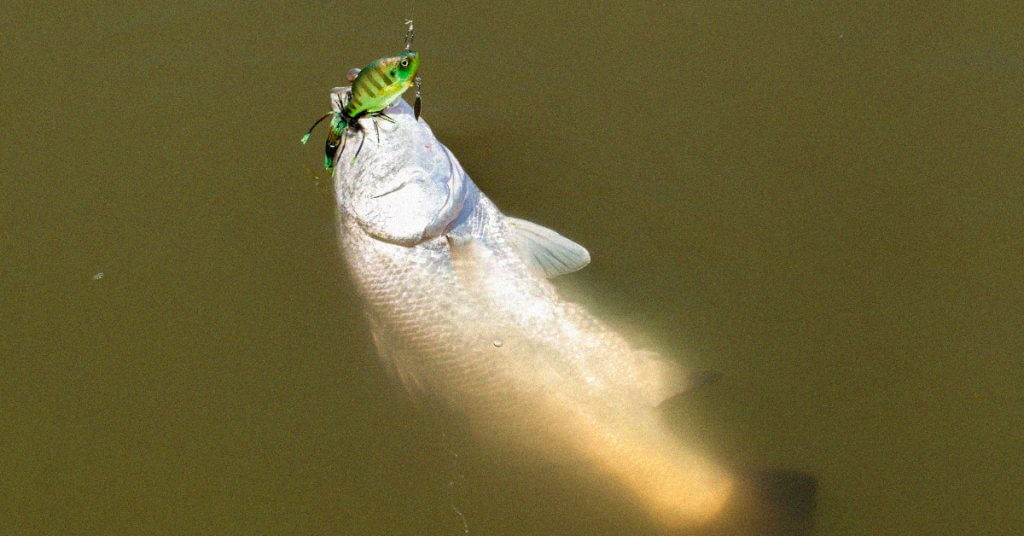Looking for jerkbaits that actually produce strikes instead of just looking good? I’ve tested countless ones over the years, and these 6 outperformed everything else.
Last updated: January 4th, 2025
- Best Overall: Rapala X-Rap Jerkbait
- Best Deep Diving: Smithwick Lures Perfect 10 Rogue
- Best Shallow Suspending: Yo-Zuri 3DS Minnow
- Best Jointed: Rapala Jointed Shallow Shad Rap 7
- Best Soft: Yamamoto D Shad Bait
- Best Floating: Rapala Original Floater Lures
- Different Types of Jerkbaits
- How to Fish a Jerkbait: When and What?
- Gear to Use When Fishing a Jerkbait
- Final Thoughts
Best Overall: Rapala X-Rap Jerkbait
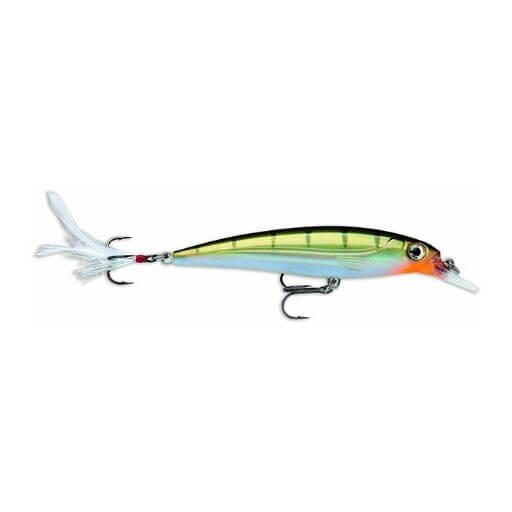
Specs
Pros
Cons
Why I Chose It
If you only buy one jerkbait this season, make it the Rapala X-Rap. After extensive testing, here’s why.
What makes this jerkbait stand out is its hard-cutting and aggressive darting action. It perfectly mimics a dying baitfish, which is exactly what triggers those reaction strikes from nearby bass.
During my testing, I found the internal rattles drew strikes even when the bass ignored other lures.
The X-Rap’s suspend depth of 3-8 feet is absolutely perfect for targeting bass in their preferred strike zone. I’ll recommend to work it slower in cold water and faster in warm water for best results.
Its long-casting system helps you reach distant spots without spooking fish – crucial for beginners and pros alike.
The X-Rap comes in a variety of color options to match your local baitfish perfectly. I like the Silver Blue for clear water and more vibrant colors like Hot Head when the water’s a bit stained.
While the internal rattles help in slightly murky conditions, I’ve found that jerkbait fishing, in general, isn’t as effective on overcast or rainy days when visibility is poor. Save this lure for those clearer days when bass can see its enticing action.
Overall, I feel the Rapala X-Rap is an essential addition to any tackle box. It costs under $17 depending on length and weight.
Best Deep Diving: Smithwick Lures Perfect 10 Rogue
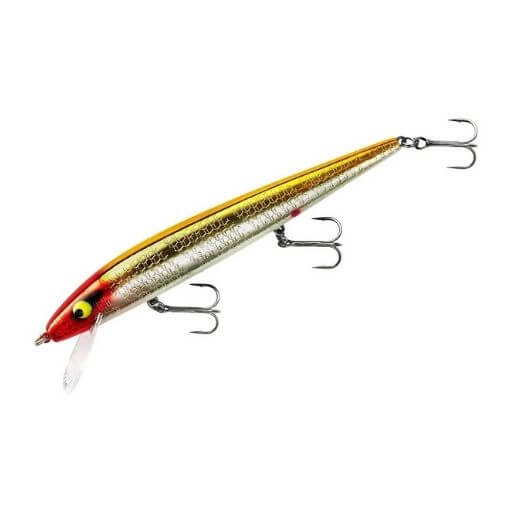
Specs
Pros
Cons
Why I Chose It
Looking for a deep-diving jerkbait that won’t break the bank? At under $10, the Smithwick Perfect 10 Rogue has been my go-to choice for deep-water bass fishing.
During my testing from the boat, this lure quickly hit depths of 10+ feet with a unique rogue roll action. The bright flash from its brilliant design drew attention on that sunny day.
I like the fact that the Perfect 10 Rogue has three treble hooks – they significantly increase chances of landing fish when it strikes. I found it especially effective for striped bass.
A crucial tip: use a 6-8lb line to get the proper suspension. The lighter weight of this lure impacts the diving action somewhat.
Best Shallow Suspending: Yo-Zuri 3DS Minnow
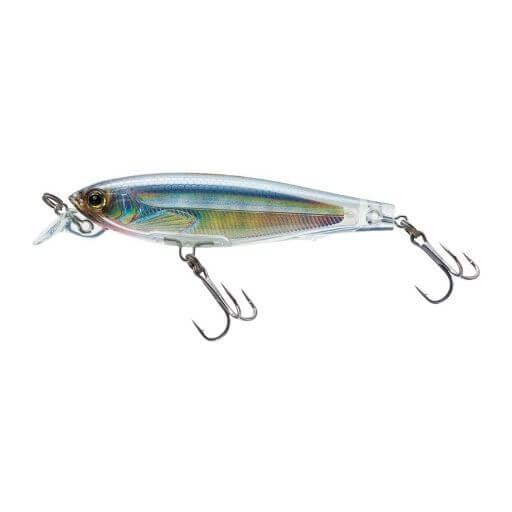
Specs
Pros
Cons
Why I Chose It
Wondering how to effectively fish those shallow areas near shore? The Yo-Zuri 3DS Minnow can consistently help land bass in these tricky spots.
I’ve found its 2-3 foot diving depth perfect for fishing around vegetation and shorelines. The 3D pattern and realistic eyes create a natural presentation that fools the bass.
Here’s a tip I learned – have quick, short jerks and keep it just below the surface of the water. Pull too hard, and you’ll break the water surface, ruining your presentation.
For best results, match your color to conditions – bright colors on sunny days, neutral tones when it’s overcast.
One downside is that the hooks could have been stronger.
That said, the realistic appearance and affordable price (under $10) make this Yo-Zuri 3DS Minnow an excellent value overall.
Best Jointed: Rapala Jointed Shallow Shad Rap 7

Specs
Pros
Cons
Why I Chose It
I’m a big fan of Rapala fishing lures, and you’ll see a few of them in this review.
What I like the most about this Rapala Jointed Shallow Shad Rap 7 is its jointed design that creates extra action without extra effort. During my testing, the joint created an attention-grabbing rattle that drew bass in from 3-4 feet depth.
The realistic eyes and color options add to its fish-catching appeal, while the jointed body helps beginners create a more natural presentation.
Important: Unlike traditional jerkbaits where you can let them suspend and wait, you’ll need to maintain a steady retrieve with this one.
The joint can catch slack line in the treble hooks if you pause too long.
For best results, match your retrieve speed to the water temperature.
Priced at under $10, the Rapala Shad Rap 7 is another affordable option in our lineup. It is perfect for fishing from the shore where snags might cost you expensive lures.
Best Soft: Yamamoto D Shad Bait
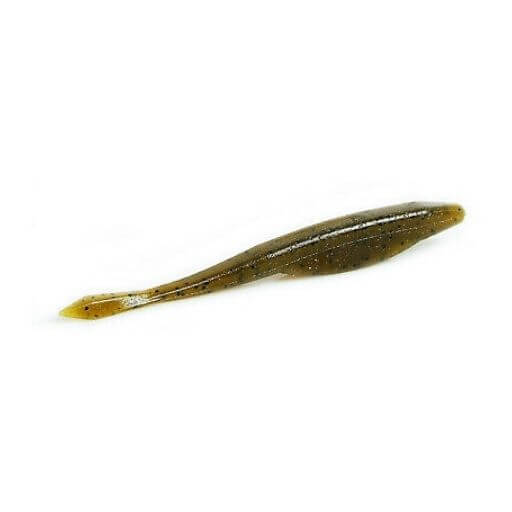
Specs
Pros
Cons
Why I Chose It
The Yamamoto D Shad proves you don’t need to spend much for an effective soft jerkbait. At under $7 for a pack of 7 baits (less than a dollar each), its the cheapest on our list.
What I love most about this bait is how quickly it dives to the bottom. During testing, I found this fast diving action lets you get more casts in and effectively cover more water.
The molded-in weight of the bait helps maintain a perfect suspension, while the soft body feels more natural to bass, often triggering harder strikes.
While these soft baits will get torn up faster than hard jerkbaits, their natural feel and quick-diving action make them worth keeping in your tackle box.
I recommend grabbing a few different colors to match varying conditions for each trip.
Best Floating: Rapala Original Floater Lures

Specs
Pros
Cons
Why I Chose It
There’s a reason the Rapala Original Floater has been a staple in tackle boxes for decades: it just works. This hand-tuned Balsa wood lure continues to prove its effectiveness time and time again.
During my testing, the lure’s lightweight design created the irresistible topwater action that bass can’t ignore.
I especially liked the ‘bleeding’ color pattern, as the lure perfectly mimicked an injured baitfish – exactly what I wanted for triggering strikes.
All in all, whether you’re targeting largemouth or smallmouth bass, the Original Floater’s natural appearance and proven action make it a must-have.
It is available for under $11, with prices varying by color.
Different Types of Jerkbaits

Now that you’ve seen some examples of jerkbaits let’s break them down so you can understand how to make the right choice.
We’ve got two primary categories here; hard and soft-bodied. Each type has a few sub-categories as well as some pros and cons.
Keep in mind that a lot of the verbiage used to describe these lures tells you a bit about the bass fishing technique as well. Let’s take a look at each option in-depth.
Hard Jerkbaits
Hard jerkbaits come with one, two, or three treble hooks, and they’re plastic, polymer, or wood. These are usually in an aerodynamic shape that helps them dive to their desired depth.
With hard jerks, sometimes they come with rattles inside. These rattles exist to create a noisy presentation as they dive down into the water, and as you jerk them.
Some hard jerks come with a joint in the middle, and that is what creates the rattle instead.
Jointed jerkbaits are a lot like crankbaits. They are two different pieces joined by a connector eyelet in the middle. As they move through the water, the two pieces slapping off the water resistance is what creates the noise.
Within the hard category, you have three additional categories as follows:
Floating
A floating jerkbait does exactly what you would think. It floats until you start to retrieve it, then it will dive down usually around 3-4 feet or less and then float back up when you stop.
These are great for creating a proper jerk motion because when you jerk the rod, they’ll dive down and then rise back to the surface. This presentation is what attracts the bass.
Suspending

The most common and favorite type is a suspending hard jerkbait. These can float around mid-depth without sinking or floating when you’re not retrieving or jerking the bait.
The advantage here is the appearance. These have a natural appearance because they plunge to the desired depth when you cast them and when you jerk them, they blast through the water.
Sinking
Sinkers are sometimes called diving, and these will continue to dive deep until interrupted by a jerking of the rod or retrieval on the reel. Anglers prefer these when they know there is the desired structure under the water that you want to hit.
These baits are heavier, so it is easier to get an accurate cast, thus reaching that structure more efficiently.
Soft Jerkbaits
Many anglers prefer soft styles because they’re more affordable, and they offer a natural appearance and feel.
When a bass bites down on a soft bait, they’re more inclined to continue rather than releasing and moving onto something else. This provides additional time for you to realize what is happening and set the darn hook.
The soft bodies also help them move through the water more naturally. When you jerk these, they’ll move in erratic directions, which is what we’re trying to create.
That type of presentation is appealing to bass because it doesn’t get repetitive, and it’s different each time you cast. You can hit the same water twice with the same lure and catch bass both times because the presentation is different than before.
One of the biggest problems I have with soft jerkbaits is line twisting. You need to use a texas rig with these and make sure you’ve got it 100% right; otherwise, the lure will spin and roll, which will cause a twist of the line and a crappy presentation.
How to Fish a Jerkbait: When and What?

Now that you know each type of jerkbait, and you might even have some ideas in mind for which one you want to get. Let’s take a look into the strategy of fishing these lures. These tips will help you get on the water and have success right away with your bass fishing jerkbaits.
The best thing about these lures is the freedom they provide. Since you’re in total control of the presentation, you can fish them from early spring all the way to late winter.
If you can find a schooling situation, you’ll also have a lot of success because every bass will bite a jerk. Schooling happens most commonly during pre-spawn season in the early spring. You’ll want to fish around channels and the mouths of creeks for the most success.
Bass will spend a lot of time at creek ends in the early spring because the rivers bring oxygen to the larger bodies of water. They will sit there and absorb the oxygen as well as anything else that floats down the river. (including your bait)
The most important factor to remember is that water clarity is everything. Most of the time, bass need to locate this lure with their eyes if you expect them to strike it. It doesn’t make a lot of noise, and it doesn’t create a super bright flash, especially if you’re not in clear water.
As a result, fishing early spring could prove to be a challenge if you have snow runoff because that creates highly murky conditions.
Choosing the Best Jerkbaits for the Situation
The first thing you’ll have to choose is the diving depth. This requires you to know a little about the water you’re fishing and the depth of it. The goal is to get above or on the same level of the bass you’re trying to catch. In knowing that, I always go more shallow than I think I need to.
If I think the bass are hanging out around 8 feet, I won’t go with a deep diving jerkbait because I might run deeper. I’ll go with a shallow 2-3 feet because I know I’ll dive down to 5-6, which is closer to where I want to be.
Color is a no-brainer, and I always preach the same recommendations on this. Go with what makes sense.
If there’s a huge shad population where you’re fishing, that would be the color I would choose. If the water is a bit murkier than you like, but you’re still smitten on fishing a one of these, go with something bright so you can grab their attention.
I always suggest using a bit of your own judgment with color because I don’t know where you are and what the conditions are. There is no bottom line rule to follow pertaining to lure color.
A Little More About Jerkbait Design
Here are a few little last-minute thoughts about choosing a jerk. Remember that these are my opinions based on experience, and every angler has different thoughts.
I go with a two treble hook setup (which is why I mostly recommended those above). I’m a sketchy angler, and I always believe in treating the bass as if they’re smarter than they actually are.
I would rather take my chances on setting the hook then spooking the crap out of them and barely even getting a nibble all day.
As for size, I find that most hard jerk sizes depend on the style and type. A deep diving lure typically has a longer profile with more of a torpedo shape than a floater or shallow water.
Gear to Use When Fishing a Jerkbait
As for rod and reel preference, I wouldn’t overcomplicate things because you’re responsible for the presentation anyway. I’d go with a standard medium-heavy rod with fast action.
If you’re throwing extra small jerks like some small soft ones, you could go with a spinning rod and reel combo, but I would still use a casting rig if possible.
What do you think is the best line for jerkbaits?
Remember that presentation is everything, and you need a line heavy enough to create the proper dive and suspension.
If you said an 8-10 pound fluorocarbon line, congratulations because you’re correct. The reason I recommend this line is because you want something that will disguise well in the water, which is fluorocarbon, and the 8-10 pound test will work well at creating the right presentation.
Final Thoughts
These lures are solid, and every angler should have a few on them at all times.
The best jerkbaits will appeal to a specific fishing opportunity, and there isn’t much that separates one from the other. In this case, I would stay loyal to a brand you respect, and for me, that’s Rapala, Strike King, and Smithwick.
I’d suggest checking out any of the lures recommended above because they’re well respected and trusted by anglers everywhere.






